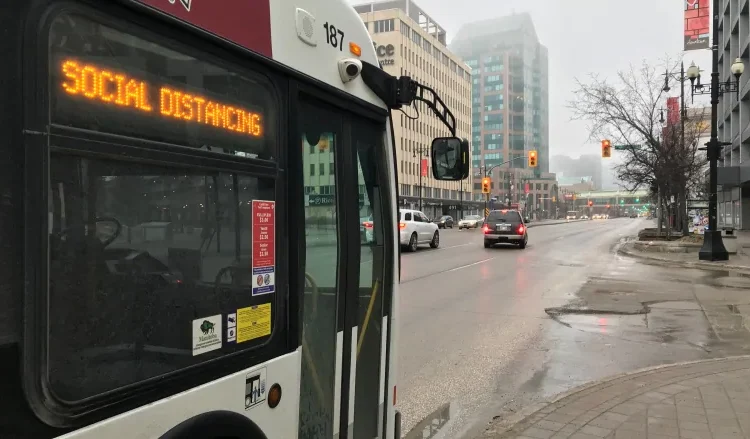Rules will take effect Oct. 5 after months-long public education campaign
A new policy designed to ensure people with disabilities can find a spot on the bus is rolling into Winnipeg.
Winnipeg Transit’s forthcoming policy outlines two types of seating that will be affected.
Priority seats — the ones at the front of the bus — are for people with disabilities. Courtesy seats, which are the forward-facing ones closest to the priority seats, are for those who benefit from being near a door, including seniors and families with young kids, the city said in a news release.
When someone with a disability — whether it’s visible or invisible — needs a seat on the bus, passengers who don’t have a disability will be asked to move elsewhere.
The bus driver will play an automated message with the request and may also remind the passengers directly if needed, the release said.
The new policy will take effect on Oct. 5, after a three-month public education campaign from Winnipeg Transit, the city said.
- Winnipeg Transit’s priority seating plan for passengers with disabilities hailed by advocates
- Disability advocates propose plan to fix, improve Winnipeg Transit
Patrick Stewart, who was among those who advocated for the policy, said the changes will mean people who use wheelchairs won’t have to worry about a bus passing them because there’s no room in priority seating.
“The previous policy was really almost no policy. It was first come, first serve. And there weren’t really any rules or guidelines that determined what to do in situations when everybody … can’t be accommodated on the bus,” said Stewart, who works for the Independent Living Resource Centre, an organization that supports people with disabilities.
“The experience for many passengers with disabilities, especially many wheelchair users, was that they would be passed up.”
The policy was passed by city council last year, a city spokesperson said in an email.
Under the new policy, spaces for mobility aids will still be able to be used for other items, like strollers or bags. But those items will need to be moved if someone with a mobility aid needs it to access the bus, the spokesperson said.
The new policy also says people with strollers on the bus will have to be able to fold and store them if needed to make sure the priority seating is available for people with disabilities. There are also size guidelines in place for strollers, wheelchairs and scooters.
- Wheelchair users say Winnipeg Transit system needs improvement ‘in big ways’ to reduce pass-ups
- ‘People don’t move’: Strollers vs. wheelchairs on Winnipeg Transit
Rae Metcalfe, a parent of two young kids, said they’re worried about what that part of the policy will mean for families like theirs who often rely on the bus to get around — and need a double stroller to do it.
The new policy “makes it very hard for parents of infants [or] of more than one kid … to be able to function in society and use public transportation that is supposed to be available to everybody,” Metcalfe said.
They said the folding umbrella-style strollers the city recommends on its transit travel tips page don’t work for kids who can’t sit on their own yet.
The smaller strollers also don’t have space to hold things like diaper bags, groceries and other items needed for a round-trip transit ride — and they’re difficult to navigate most sidewalks in a Winnipeg winter, they said.
Metcalfe, who has epilepsy and a child with mobility issues, said while the double stroller they use can fold up, that means taking out both kids, moving the car seat that one of their kids is in and removing any cargo they’re carrying, like diapers and formula.

They said they understand the intent of the policy, but without making changes to the layout of buses — like adding more seats that can flip up to make room for a stroller — they worry about where it will leave parents who can’t afford another way to get around.
“I know that having a disability is hard. I know that having mobility issues is hard, and I know that having to bus and plan your life around a bus schedule is hard,” they said.
“But now we’re making a whole subset of people who already have an issue heading back to work because of daycare costs … have an issue heading back to work [because of not] being able to take children to daycare, being able to take children safely to work, to drop off at school — all these things — because they require a stroller access to do that.”


